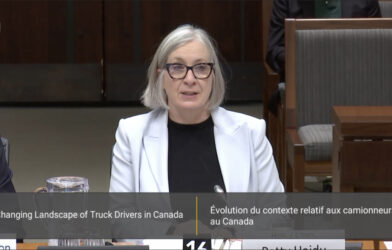Pre-trip and post-trip inspections are extremely common terms in the trucking industry in Canada and the USA. Sometimes referred to as driver vehicle inspection reports (DVIRs), these inspections are performed by the vehicle’s driver in preparation for driving and again at the end of the shift to see if any defects have developed (the pre-trip and the post-trip, respectively).
Throughout this piece I will assume the reader knows how to perform a pre-trip and post-trip inspection. The focus here isn’t on reviewing the process for these inspections, but instead is to provide the professional driver with some tips and tricks that can make these inspections more thorough.
But first, let’s review the regulations in Canada and the USA for pre-trip and post-trip inspections. This next section describes details in legislation and is for those interested in learning about commercial vehicle regulations. Feel free to skip to the pointers section if you’re not interested in a dive into regulations.
Regulations for Pre-Trip and Post-Trip Inspections
The terms “pre-trip” and “post-trip” do not appear in most regulations concerning these inspections. These are industry terms, and there is nothing wrong with using them. But when reading legislation, the language used to describe these inspections varies between jurisdictions. The only relevant place these terms are used as-written is in the Federal Motor Carrier Safety Regulation (FMCSR) §386.15, and this section only describes inspection requirements for driveaway-towaway operations.
Regardless of the language, there are specific requirements for these inspections. In Canada, the provinces are required to create legislation around the National Safety Code (NSC) Standards created by the Canadian Council of Motor Transport Administrators (CCMTA). The provinces typically use a combination of adoption and mimicking in their legislation to meet the requirements of the Standards. In Alberta, for example, the Commercial Vehicle Safety Regulation AR 121/2009 states that commercial vehicles over 4,500 kg and buses must be inspected each day by the carrier (carriers typically delegate this responsibility to the driver of the vehicle) [1]. The wording in this legislation is very similar to the NSC Standard 13 Trip Inspections; to guide carriers on what items need to be inspected, Alberta refers directly to the vehicle-specific schedules in NSC Standard 13 which list components that must be inspected and major and minor defects for each section
Canada requires commercial drivers to do a daily trip inspection, but there is no requirement for a post-trip inspection. However, post-trip inspections are an industry best practice, and carriers and drivers that do not do an inspection of their vehicles at the end of a work shift are missing an important part of their safety system.
In the USA, there is a legislated requirement for both pre-trip and post-trip inspections. You do have to jump around the Federal Motor Carrier Safety Regulations (FMCSRs) to find each, but they are noted directly in the regulations. FMCSR Section §392.7, “Equipment, inspection and use” and §396.13 “Driver inspection” outline the requirements for a pre-trip inspection and are interpreted to mean that the driver must conduct an inspection of the vehicle prior to driving in each work shift [3, 4].
The American requirement for a post-trip inspection can be found in the FMCSRs §396.11 “Driver vehicle inspection report(s)” which states the requirements for driver inspections at the end of their work shift [5]. So in the USA, pre-trip and post-trip inspections are legally required, whereas in Canada a post-trip is not a legal requirement (but is still an industry best practice).
Inspection Pointers
In the course of interacting with different drivers, safety professionals, law enforcement officers, and companies, I learned some pointers that can apply to just about all truck and tractor-trailer combinations. I was taught these skills by industry long-haulers interested in seeing me do better, and I share them here with that same spirit.
1 – Move the Vehicle Mid-Inspection
At some point in a pre-trip and post-trip inspection, it is useful to move the vehicle forwards or backwards by about a half-turn of the tires. Once this short move is done, another walk-around of the vehicle is done. The reason why this is a useful inspection technique is because it allows the driver to check the areas of the tire tread that were not visible before. I have caught many tire gouges and similar defects by using this technique.
2 – Use the Trailer Brake Control
Truck-tractors with a trailer brake control allow the driver to inspect parts of the service brake system for leaks (and to check the brake lights). Since drivers are often alone for these inspections, it is useful to be able to set the trailer brake and then walk around the vehicle to listen for leaks. Just make sure that the truck’s parking brake is set; never rely on the hand control for the trailer brakes as a parking brake.
3 – Check Signals Separately
Many drivers use the vehicle’s 4-way flashers to check the signal lights. While this will allow for the inspection of the lights themselves, it does not allow for the checking of the individual signal light circuits and switches. Vehicle inspections should include checking the right and left signal lights separately from the 4-way flashers to ensure that all light systems are working properly.
4 – Carry Cheap Parts
Drivers at different companies have different levels of responsibility when it comes to maintenance and repairs. Many companies do not authorise driver repairs, so make sure you check with your company before using this trick.
If you are able to perform the basic repairs like the replacement of glad hand rubber seals and hub filler caps, make sure you carry some extras of these little items. A torn glad hand rubber can result in an air leak serious enough to end your trip, so carry spares. Doing so can save hours of time spent waiting for a service truck.
5 – Never Skimp on the Post-Trip
Post-trip inspections are generally not as detailed or as long as a pre-trip. Hot components like the exhaust can’t be safely checked, and fluid levels and tire pressures cannot be measured accurately after the vehicle has been operating.
Even though a post-trip is simpler than a pre-trip, don’t limit your post-trip to a simple walk-around. All lights should be checked. Tires should be inspected for obvious defects, leaks, and flats, and the airbrake system should be checked for leaks. In short, find a way to make post-trips thorough. If you miss defects during a post-trip, they will be there waiting for you the next day. But if you catch defects during your post-trip, repair arrangements may be made for your off-duty time.
Summary
Pre-trip and post-trip inspections are recurring parts of a professional driver’s life on the road. Like anything, though, there is always room for improvement, and careless repetition causes bad habits to take root.
This article is not the definitive source of tips and tricks for driver vehicle inspections. What it is is a quick way for me to share some of my professional experience with other drivers. If you’re afraid to share your tips and tricks with others, just remember: you might be the first person in the industry willing to invest some time in their career. We all have something to offer.
References
1 – “Daily Trip Inspection Requirements”, Section 10 of Alberta Regulation 121/2009, Commercial Vehicle Safety Regulation, Province of Alberta, accessed August 11th, 2021, https://www.qp.alberta.ca/documents/Regs/2009_121.pdf
2 – “NSC Standard 13: Trip Inspection”, Canadian Council of Motor Transport Administrators, accessed August 11th, 2021, https://www.ccmta.ca/web/default/files/PDF/Standard_13_March_2009.pdf
3 – “§392.7 Equipment, inspection and use”, Federal Motor Carrier Safety Regulations, Federal Motor Carrier Safety Administration, accessed August 11th, 2021, https://www.ecfr.gov/cgi-bin/retrieveECFR?gp=1&ty=HTML&h=L&mc=true&=PART&n=pt49.5.392#se49.5.392_17
4 – “§396.13 Driver inspection”, Federal Motor Carrier Safety Regulations, Federal Motor Carrier Safety Administration, accessed August 11th, 2021, https://www.ecfr.gov/cgi-bin/retrieveECFR?gp=1&ty=HTML&h=L&mc=true&=PART&n=pt49.5.3965 – “§396.11 Driver vehicle inspection report(s)”, Federal Motor Carrier Safety Regulations, Federal Motor Carrier Safety Administration, accessed August 11th, 2021, https://www.ecfr.gov/cgi-bin/retrieveECFR?gp=1&ty=HTML&h=L&mc=true&=PART&n=pt49.5.396














Comments are closed